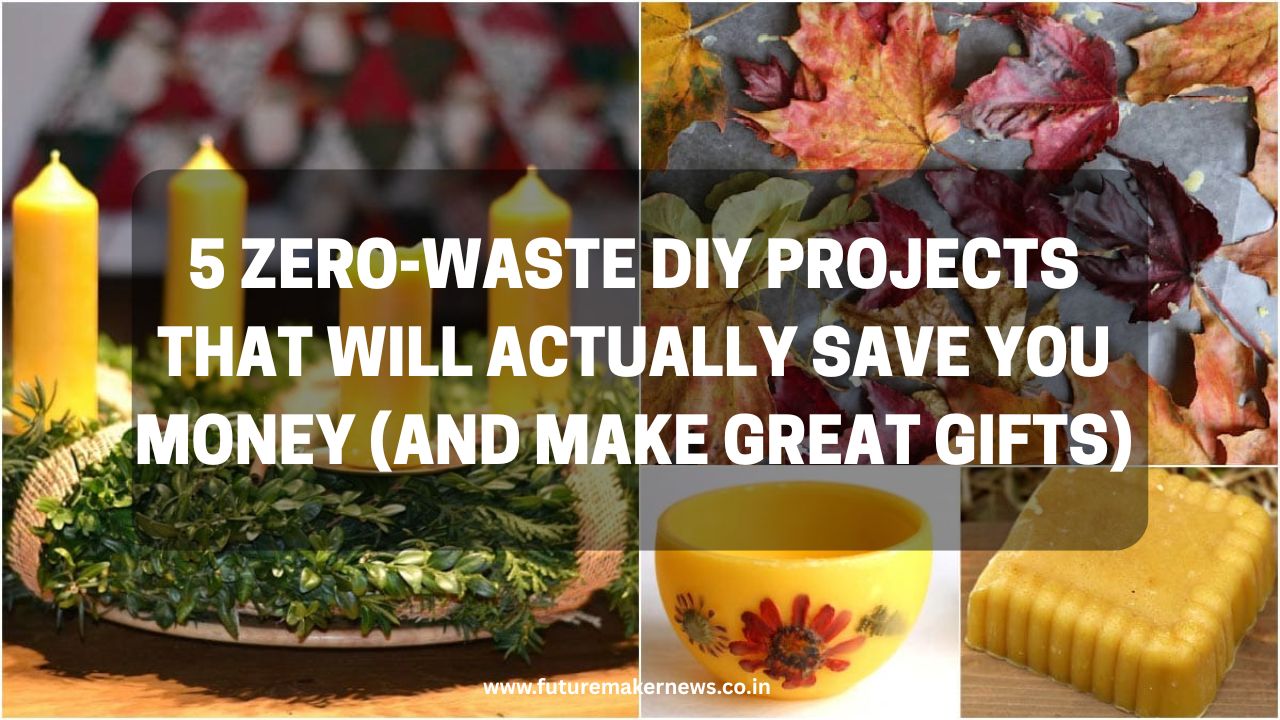In today’s world, living sustainably isn’t just trendy — it’s essential. But the idea of zero-waste living can feel intimidating. Where do you start? How do you make a difference without breaking the bank? The answer is simple: DIY projects.
Not only are zero-waste DIY projects eco-friendly, but they also save money and make thoughtful gifts. Imagine giving your loved ones something handmade, sustainable, and completely unique — all while reducing waste.
In this article, we’re sharing 5 zero-waste DIY projects that are practical, fun, and easy to create at home. Each project is designed to help you save money, minimize environmental impact, and impress friends and family with thoughtful gifts.
1. Reusable Beeswax Food Wraps
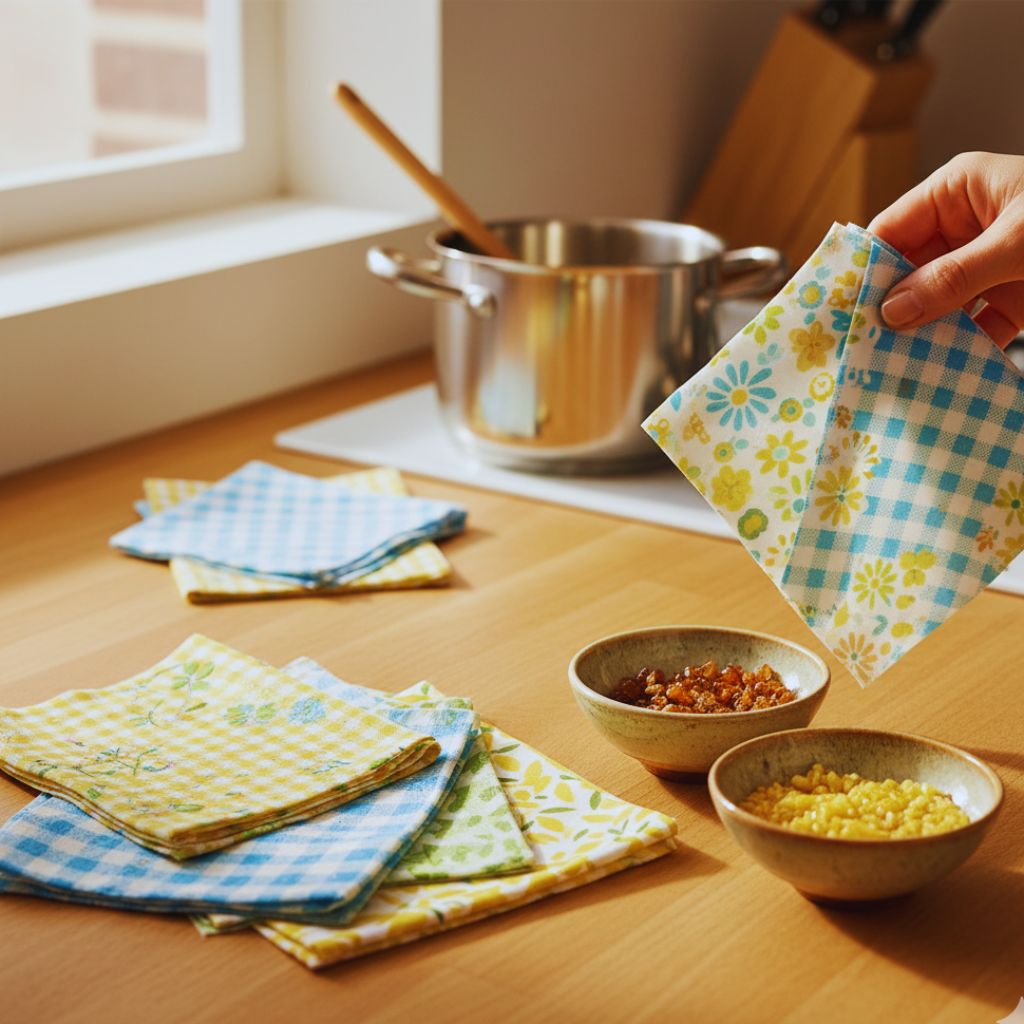
Say goodbye to single-use plastic wraps! Beeswax food wraps are a sustainable, stylish, and cost-effective alternative.
Materials Needed:
- Cotton fabric scraps
- Beeswax pellets
- Pine resin (optional for extra stickiness)
- Jojoba oil
Steps:
- Cut fabric into squares or rectangles.
- Sprinkle beeswax pellets evenly over the fabric. Add pine resin and a few drops of jojoba oil.
- Place the fabric on a baking sheet and melt in the oven at low heat or use an iron with parchment paper.
- Let cool. Your reusable wrap is ready!
Why It Works:
- Eco-Friendly: Reduces plastic use in the kitchen.
- Money-Saving: One wrap lasts months, replacing dozens of disposable wraps.
- Gift-Worthy: Pair with a set of different patterns for a cute, personalized gift.
2. Homemade Natural Candles
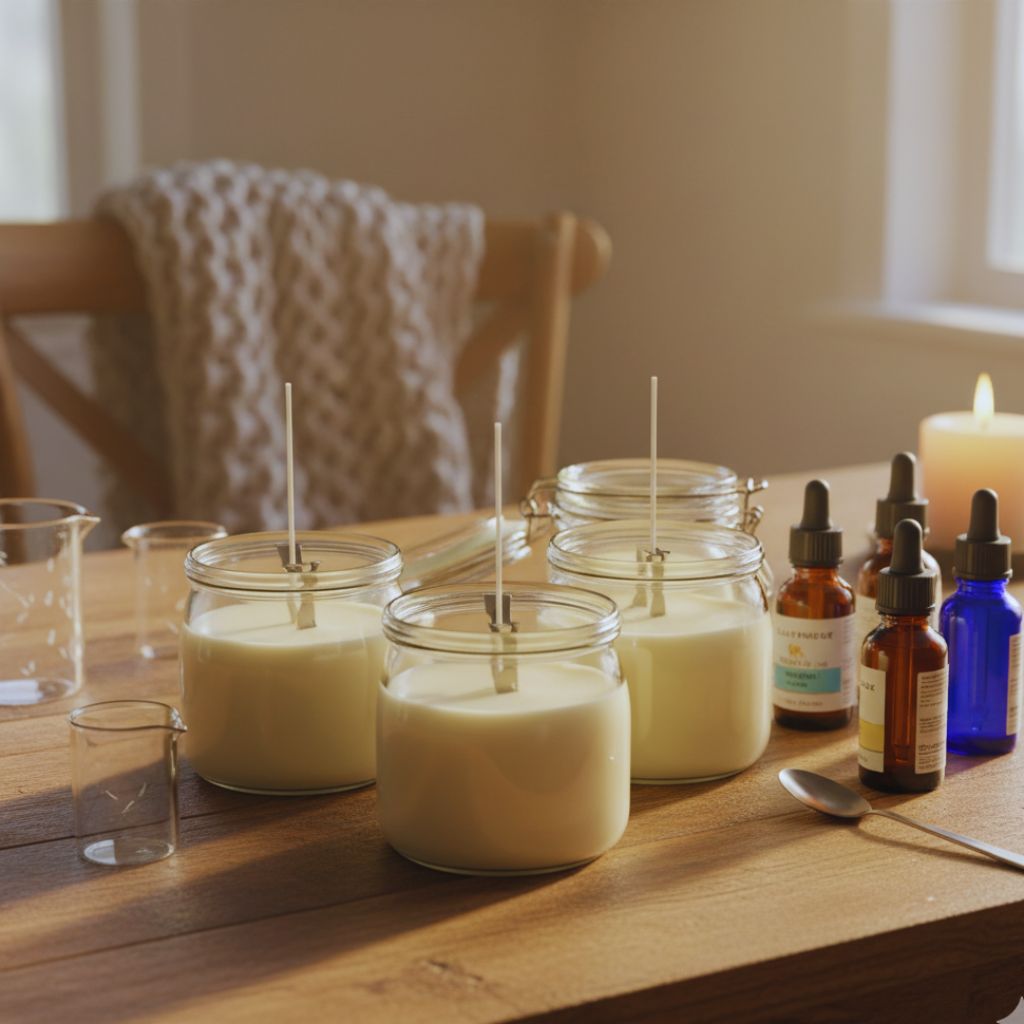
Candles are a staple in many homes, but store-bought candles often come in plastic containers and synthetic waxes. Making your own zero-waste candles is fun, easy, and creative.
Materials Needed:
- Soy wax or beeswax
- Old glass jars or tins (repurposed)
- Cotton wicks
- Essential oils (for fragrance)
Steps:
- Melt the wax in a double boiler.
- Add a few drops of your favorite essential oil.
- Place the wick in the jar and pour the wax carefully.
- Let the candle cool and trim the wick.
Why It Works:
- Cost-Efficient: Repurpose jars and tins from around the house.
- Eco-Friendly: Avoids synthetic chemicals and reduces waste.
- Personalized Gifts: Customize scents and colors for friends and family.
3. Upcycled Fabric Tote Bags

Plastic bags are one of the most common pollutants. Making a reusable tote bag from old clothing or fabric scraps is a practical and stylish zero-waste project.
Materials Needed:
- Old t-shirts, pillowcases, or fabric scraps
- Sewing machine or needle and thread
- Scissors
Steps:
- Cut the fabric into two equal rectangles for the bag’s front and back.
- Sew the sides and bottom together.
- Create handles by cutting and folding extra fabric, then stitch onto the top.
Why It Works:
- Eco-Friendly: Reduces single-use bag consumption.
- Budget-Friendly: Turns old clothing into a useful item.
- Gift Potential: Perfect for farmers’ market trips, books, or groceries.
4. DIY Compostable Scrubbers
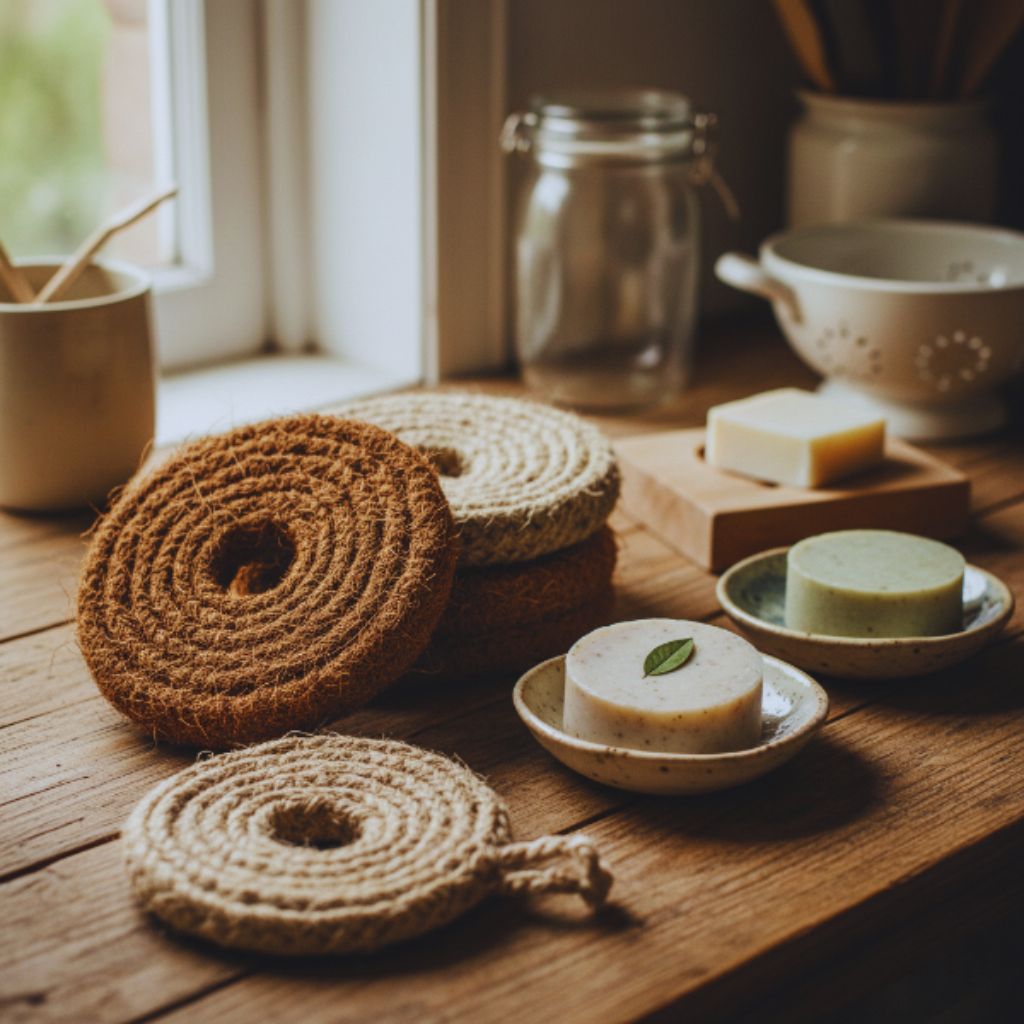
Kitchen waste is unavoidable, but zero-waste scrubbers help reduce plastic sponges. You can make your own eco-friendly scrubbers using natural materials.
Materials Needed:
- Coconut coir, jute, or sisal fiber
- Scissors and string (optional for weaving)
Steps:
- Cut fibers into desired shapes (circle, square, rectangle).
- Weave or braid fibers loosely and tie ends.
- Use as a scrubber for dishes, pots, and pans.
Why It Works:
- Sustainable: Biodegradable and long-lasting.
- Cost-Saving: Replaces store-bought plastic scrubbers.
- Gift-Worthy: Add a few with natural soaps for a zero-waste kitchen set.
5. Upcycled Jar Herb Garden
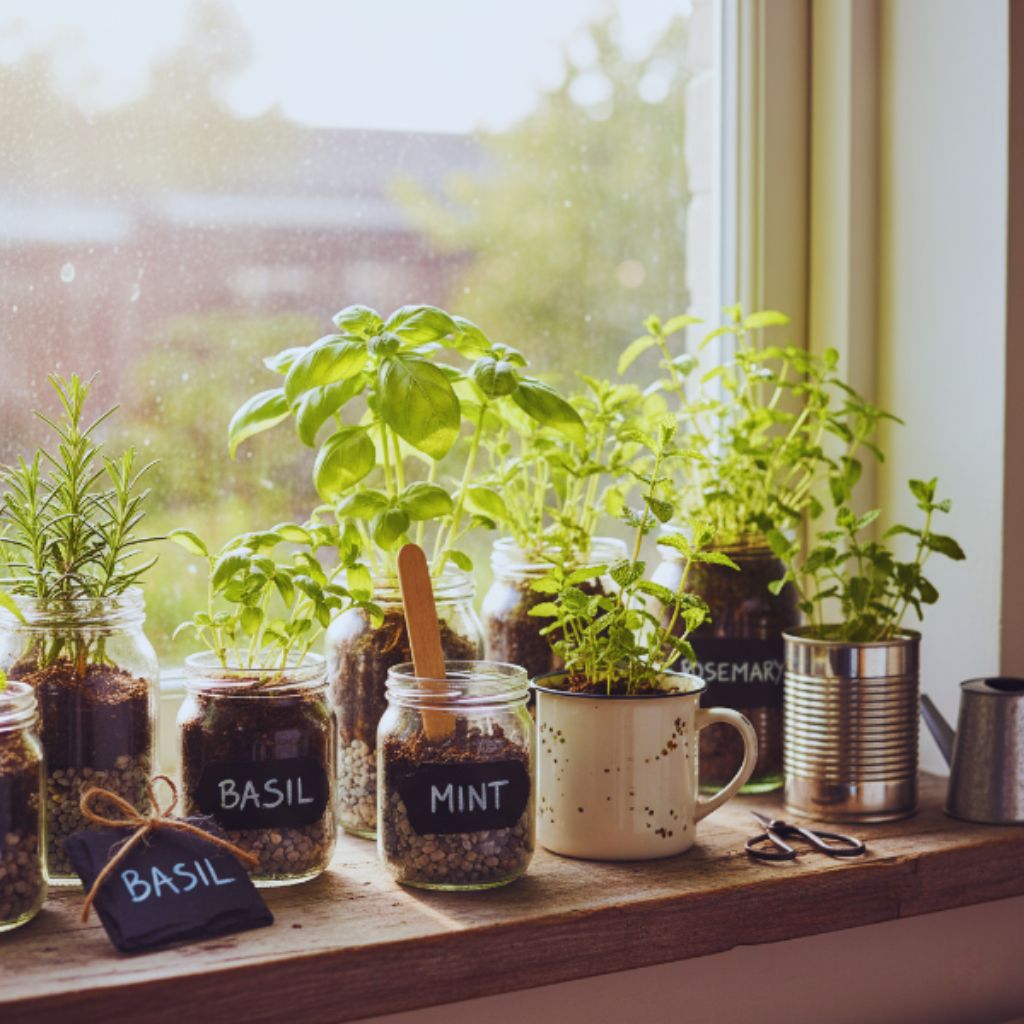
For anyone who loves fresh herbs or indoor gardening, creating a mini herb garden in repurposed jars is an easy and eco-conscious DIY project.
Materials Needed:
- Old jars, mugs, or tin cans
- Soil and small pebbles for drainage
- Herb seeds or small plants
Steps:
- Place a layer of small pebbles at the bottom for drainage.
- Add soil and plant seeds or small herbs.
- Decorate the jars with labels or paint for a personal touch.
Why It Works:
- Zero-Waste: Repurposes jars and reduces packaging waste from store-bought plants.
- Cost-Saving: Grows herbs at home instead of buying packaged ones.
- Gift Potential: Personalize jars and herbs for eco-friendly gifts.
Why Zero-Waste DIY Projects Are Worth It
These 5 projects prove that zero-waste living doesn’t have to be boring or expensive. They offer:
- Financial Benefits: Most projects use repurposed materials or low-cost items.
- Environmental Impact: Reduce waste, plastic use, and chemicals in your home.
- Creative Satisfaction: Handmade gifts carry more meaning than store-bought items.
- Personalization: Every item can be customized with colors, scents, and designs.
DIY zero-waste projects blend practicality with creativity, making them perfect for anyone looking to live more sustainably.
Tips to Make Your Zero-Waste Projects Successful
- Start Small: Begin with one project to avoid overwhelm.
- Use Repurposed Materials: Old clothes, jars, and scrap fabrics reduce waste and cost.
- Personalize: Add labels, paint, or scents to make gifts memorable.
- Document Your Process: Share on social media to inspire others.
- Mix Practicality with Fun: Choose projects that are useful in daily life.
Final Thoughts: Sustainable, Creative, and Budget-Friendly
Zero-waste DIY projects are not just eco-friendly; they’re a way to express creativity, save money, and make thoughtful gifts. From beeswax wraps to mini herb gardens, each project encourages mindful living while providing tangible results.
By incorporating these 5 zero-waste DIY ideas, you’ll reduce your environmental footprint, enjoy fun hands-on activities, and impress friends and family with thoughtful, handmade gifts.
Zero-waste living doesn’t have to be intimidating — start small, get creative, and make a difference one DIY project at a time.

